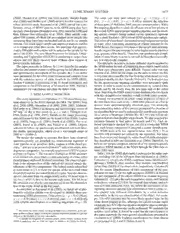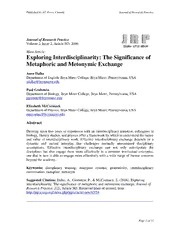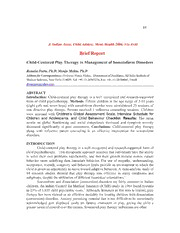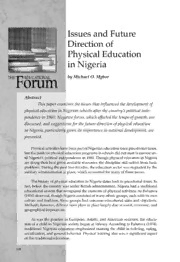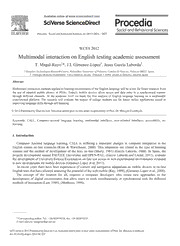
ERIC ED578094: Multimodal Interaction on English Testing Academic Assessment PDF
Preview ERIC ED578094: Multimodal Interaction on English Testing Academic Assessment
Available online at www.sciencedirect.com Procedia - Social and Behavioral Sciences 46 ( 2012 ) 5824 – 5827 WCES 2012 Multimodal interaction on English testing academic assessment T. Magal-Royo1*, J.L Gimenez- 1 2. 1 Graphics Technologies Research Centre, Polytechnic University of Valencia, Camino de Vera s/n, Valencia 46022. Spain. 2 F Department. Unive . Abstract Multimodal interaction methods applied to learning environments of the English language will be a line for future research from the use of adapted mobile phones or PDAs. Today's mobile devices allow access and data entry in a synchronized manner through different channels. At the academic level we made the first analysis of English language learning on a multimodal experimental platform. The research will evaluate the impact of college students use for future online applications aimed at improving language skills through self-learning. © 201122 P Pubulbislihsehde db yb Ey lEselvseievri eLrt dL. tSde. lection and/or peer review under responsibility of Prof. Dr. Hüseyin Uzunboylu Keywords: CALL, Computer-assisted language learning, multimodal interfaces, user-oriented interfaces, accessibility, m- learning. 1. Introduction Computer Assisted language learning, CALL is suffering a important changes in computer integration in the English exams on-line researchs (Kern & Warschauer, 2000). This adaptation are related to the type of learning content and the method of development of the tests on- projects development named PAULEX Universitas and OPEN-PAU, (Garcia Laborda and Litzler, 2011), evaluate the development of University Entrace Examination on-line test access in web experimental environments extended to - In recent years there have been experiences of content and navigation adaptations on mobile devices in on-line English tests that have allowed assessing the potential of the web mobile (Kay, 1999), (Gimenez-Lopez et al., 2009). The concept of the Internet for all, requires a computer developers who create new approaches to the development of digital environments that allow users to work simultaneously or synchronized with the different methods of interaction (Last, 1989), (Matthews, 1994). * Corresponding author. Tel.: +34-963879518; fax: +34-963879519. E-mail address: tmagal@degi.upv.es 1877-0428 © 2012 Published by Elsevier Ltd. Selection and/or peer review under responsibility of Prof. Dr. Hüseyin Uzunboylu doi: 10.1016/j.sbspro.2012.06.522 T. Magal-Royo et al. / Procedia - Social and Behavioral Sciences 46 ( 2012 ) 5824 – 5827 5825 2. La interaction multimodal. Multimodal interaction is a process in which devices and users are able to make a joint interaction-whether auditory, visual, tactile or gestural, from anywhere, anytime accessible way (W3C, 2002) The user through multimodal interaction can determine the mode or modes of interaction that you use to access information through different types of input such as keyboard, mouse, stylus, touch screens, voice, etc ... on a specially developed interface for it. In fact this method of interaction is used in human communication in a conventional way because the way we communicate not only provides a single channel. For example, in verbal communication simultaneously all the insights gained from the sight, sound, gestures, etc. .. gives us an idea of the situation, the context in which to speak, recognize the caller and respond to the message received. The multimodality applied to digital communication environments is a field of research which has worked from the 70's, but computer technology was not sufficiently prepared for it. The studies carried out during the 90's focused on evaluating the effective use of multimodal input devices that would improve digital communication in the search for information through a natural navigation (Oviatt, 1999) (Bangalore and Johnston, 2000). Also, it has been developed researchs about the use with certain devices against others (Oviatt, 1996) (Nishimoto et al. 1995), (Hauptmann, 1989). The verification of the effectiveness of using multimodal interface environment from user point of view showed that it is now possible with the development of new devices and methods of interaction (Zander et al, 2010), (Desney and Nijholt, 2010). In the area of the CALL, multimodal interfaces have been used to promote reading skills (Alwan et al. 2007), although there is no specific research project to evaluate its use in the entrance exam to the University or the test English assessment. Neither has shown the impact of computerized testing application in mobile devices (Norbrook and Scott, 2003). It has now made a new proposal that takes into account the creation of a multimodal application to be for English proficiency exams on-line based on the current design of selective testing access to the University. (Magal-Royo et al, 2011). 3. MM-PAU platform. The experimental environment called "multimodal interface for testing access to the university in the English language," MM-PAU, developed by the Research Center in Graphics Technology at the Polytechnic University of Valencia applied the multimodality criteria in the user configuration. (Figure 1). The English assessment exam for university entrance is divided into four sections. These are: Reading comprenhension, composition, grammar and oral and it was the basis for creating an online interactive exam on ubiquitous devices. Starting from the constraints of the adaptation of digital content from the text contents conventional entrance exams, (Gimenez-Lopez et al., 2011), we opted for the establishment of a set of criteria that navigability directly affect the selection of two multimodal communication channels: the hand touch-speech interaction and the voice-sound interaction because these two types of interaction can be implemented in most ubiquitous devices such as Smartphones. For general validation and data flow analysis was performed general interactive application that allowed experts to debug the problems arising from the final adaptation of content in the end devices. Subsequently, the result was verified using emulators. Finally created an interactive versions based in Android was developed in three basic devices: HCT Desire , Samsung Galaxy an a conventional tablet PC (Figure 2). 5826 T. Magal-Royo et al. / Procedia - Social and Behavioral Sciences 46 ( 2012 ) 5824 – 5827 Figure 1. Data flow of MM-PAU. The user verification was performed with the conventional design of a survey with engineering students from the Polytechnic University of Valencia, using a emulation versions on computer and on the devices. The survey established the relationship between prior knowledge of the user with this type of device and ease to use of the final application with the general satisfaction level. The results have been satisfactory to the extent that users feel comfortable during the test run and above all the freedom in selecting the type of interaction desired for its implementation even if it affects the overall selection system multimodality selected by the user and can not be changed once selected. Figure 2. Functional structure of MM-PAU on Samsung Galaxy device. 4. Conclusion. The concept of multimodality and may have future applications in the field of generation on-line testing of language skills. Validation of this type of specific task-oriented applications has permitted to analized the possibilities that T. Magal-Royo et al. / Procedia - Social and Behavioral Sciences 46 ( 2012 ) 5824 – 5827 5827 will be used in the field of CALL and allowing the user to access content and exams anywhere, anytime, and configure their own work environment. Acknowledgments. This work was carried out through research conducted ltidisciplinary research PAID-05- References. Alwan, A.; Yijian Bai; Black, M.; Casey, L.; Gerosa, M.; Heritage, M.; Iseli, M.; Jones, B.; Kazemzadeh, A.; Sungbok Lee; Narayanan, S.; Price, P.; Tepperman, J. y Shizhen Wang. -07, pp. 26-30. http://diana.icsl.ucla.edu/Tball/publications/tball_mmsp07.pdf. Consulted: 15/10/2011. Bangalore, S. y M. Johnston (2000). "Integrating Multimodal Language Processing with Speech Recognition". Proceedings of International Conference on Spoken Language Processing, Beijing, China. Garcia Laborda, J. y Litzler, M. F. (2011). Teaching english language learners through technology. Language Learning & Technology, 11 (2), 39- 41. panha: Experiencias de Aprendizagem Mediada por Computador, Campinas-Brasil. Gimenez- (2009) Methods of adapting digital content for the learning process via mobile devices. Procedia - Social and Behavioral Sciences, 1(1), 2009, 2673- - Validating mobile devices in the Spanish University Entrance Exam English paper. The new Educational Review, 25(3). Hauptmann, A. G. (1989). Speech and gestures for graphic image manipulation. Computer Human Interface Conference. CHI-89, pp. 241-245. Johnston, M. y S. Bangalore. 2005. "Finite-state Multimodal Integration and Understanding". Journal of Natural Language Engineering 11.2, pp. 159-187, Cambridge University Press. http://archive.cra.org/Activities/grand.challenges/kay.pdf . Consulted: 18/07/2011. - - Press. pp. 1 19. Magal-Royo, T., Laborda, J.G. y Gimenez-Lopez, J.L, (2011). Accessible Multimodal Interaction for Language Learning on Mobile Devices. International Conference on Applied Social Science, March (ICASS 2011), VOL II, 47-51. 19-20. -98. sted Language Learning as Cognitive Science: The choice of Syntactic Frameworks for -56. Nishimoto, T., Shida, N., Kobayashi, T., y Shirai, K. (1995). Improving Human Interface in Drawing Tool Using Speech, Mouse, and Key-board. Proc. of 4th IEEE International Workshop on Robot and Human Communication, ROMAN'95, pp. 107-112. l, G. Da Bormida, M. Sharples, & C. Savill-Smith (Eds.), MLEARN 2003: Learning with mobile devices. Learning and Skills Development Agency. http://www.lsda.org.uk/files/pdf/1421.pdf Consulted: 21/07/2001 Oviatt S. (1996). Multimodal interfaces for dynamic interactive maps. CHI. Human Computer Interaction, pp 95-102. Oviatt S. (1997). Multimodal interactive maps: Designing for human performance. Human Computer Interaction, pp. 93-129. he ACM. ACM Press, Vol. 42, 11, pp. 74 81. - Processing. ICSLP-96. Oviatt, S., Cohen, Ph., Fong, M, and Frank, M. (1992): "A rapid semi-automatic simulation technique for investigating interactive speech and handwriting". International Conference on Spoken Language Processing. ICSLP-92, pp.1351-1354. W3C. Multimodal Interaction Activity. World Wide Web Consortium. http://www.w3.org/2002/mmi/. Consulted : 30/09/2011.
The list of books you might like

The Strength In Our Scars

$100m Offers

Do Epic Shit

Believe Me
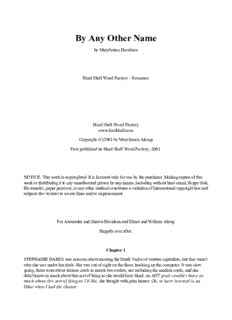
By Any Other Name
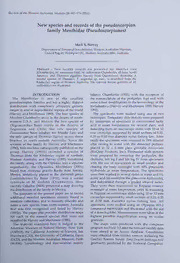
NEW SPECIES AND RECORDS OF THE PSEUDOSCORPION FAMILY MENTHIDAE (PSEUDOSCORPIONES)
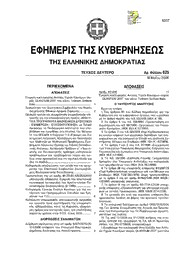
Greek Government Gazette: Part 2, 2006 no. 625

DTIC ADA523780: Fluid Mud in Energetic Systems: FLUMES
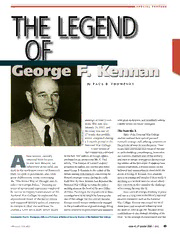
DTIC ADA523062: The Legend of George F. Kennan

C. S. Friedman - This Alien Shore

The Dancing Floor
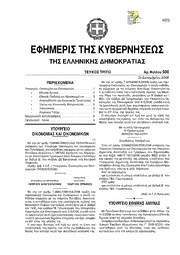
Greek Government Gazette: Part 3, 2006 no. 500
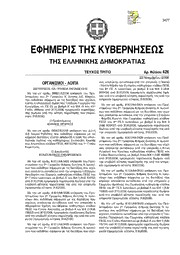
Greek Government Gazette: Part 3, 2006 no. 426

Called The Black Pope by many of his followers, Anton
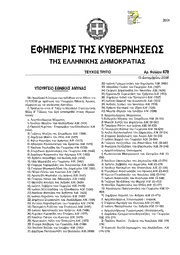
Greek Government Gazette: Part 3, 2006 no. 478
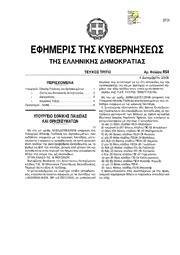
Greek Government Gazette: Part 3, 2006 no. 454

Greek Government Gazette: Part 4, 2006 no. 23
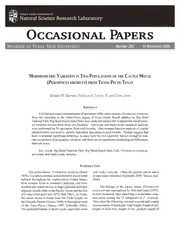
Morphometric variation in two populations of the cactus mouse (Peromyscus eremicus) from Trans-Pecos Texas
